Student file of William H. Dietz, a member of the Sioux Nation, who entered the school on September 15, 1907, and departed on April 24, 1908. The file contains a student information card, news clippings with several photographs, an application for enrollment, a trade/position record card, and a report after leaving that indicates Dietz was…
Dietz, William H.
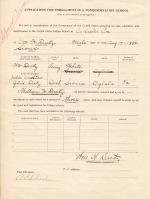

Student information card of William H. Dietz, a member of the Sioux Nation, who entered the school on September 15, 1907 and departed on April 24, 1908.
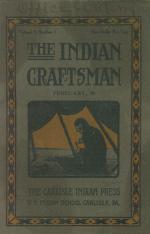
The superintendent of the school described improvements of school buildings, as well as an increase in attendance. Next, appeared a history of the Flathead Indians, accompanied by images from the Flathead Reservation in Montana. F. Shoemaker, M.D. detailed how tuberculosis infections were handled at the school. The following section…
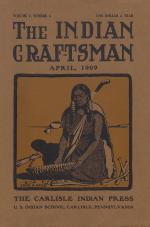
The opening article praised the work of Francis E. Leupp, Commissioner of Indian Affairs. The following article, pulled from the Philadelphia Ledger, featured two Carlisle students. Thomas Saul (Wanyeya) and Reuben Charles (Gwee-yeh-is) were awarded the Gillespie Scholarship and were being trained in the arts. Next, C. J. Crandall…
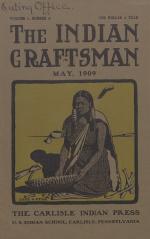
This issue, which commemorates the Commencement Exercises of the Class of 1909, featured speeches highlighting the success of Indian education. Francis E. Leupp, in his address, among many things spoke on the success of the arts at Carlisle. He was followed by Moses E. Clapp, Chairman of the Senate Committee on Indian Affairs. Clapp shared "…
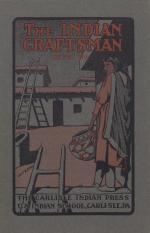
A description of this publication is not currently available.
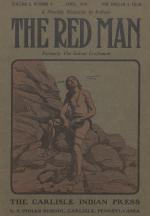
The first article, written by Franz Boas, discussed "Methods in Indian Woodwork." Frank C. Churchill wrote about a council of Ponca, lead by Chief White Eagle and gave an account of the speeches made at the council. Next an article, pulled from the New York Tribune, reported on the improving conditions of Indians across the United…

William B. Freer wrote about the second annual Southern Cheyenne and Arapaho Fair held in Watonga. He mentioned that between 2,000 and 2,500 Cheyenne and Arapaho attended the fair. Some of the events discussed were religious services; a lecture on tuberculosis and trachoma; and numerous exhibitions of livestock, produce, and farm practices. The…

Studio of William Dietz, also known as Lone Star Dietz.

Group portrait of male and female students on stage wearing costumes. They are the cast of the play, "The Captain of Plymouth," produced at the school from March 29-March 31, 1909.
The caption written below this image was supplied by Cumberland County Historical Society staff.
Note: There were two students named James…
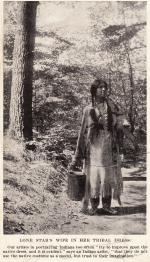
The caption reads: LONE STAR'S WIFE IN HER TRIBAL DRESS.
The printed note reads: Our artists in portraying Indians too often "try to improve upon the native dress, and it is evident," says an Indian artist, "that they do not use the native costume as a model, but trust to their imagination."

The handwritten note reads: Carlisle Indians 1911-1912.
The typed note on the reverse side reads: 1911 & 1912 Carlisle Indian Team.
BACK
ARCASA R HB ; WELSH QB ; POWELL FB ; THORPE L HB
…
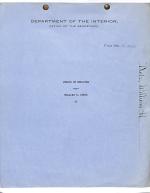
This folder contains a piece of paper referring the reader to Angel DeCora Dietz's file for information on William H. Dietz's trip to attend the Conference of Indian Friends at Lake Mohonk. The paper indicates that William H. Dietz held the position of Assistant Teacher of Native Indian Art at the time.
Note: The official personnel…
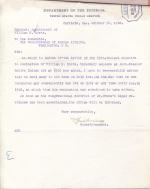
These materials include correspondence between Superintendent Moses Friedman and the Commissioner of Indian Affairs concerning the beginning of William H. Dietz's employment as assistant teacher of Native Indian art.
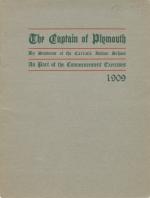
The program for "The Captain of Plymouth," performed as part of the Commencement Exercises of 1909. The program lists the various acts of the performance as well as the student actors.
Note: In two cases it is unclear which student is referred to: Mary Cooke in this program could refer to Mary Cook (who entered in 1901) or Mary…
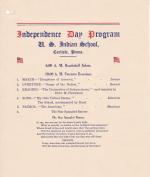
These materials include correspondence and a copy of the Independence Day Program for the Indian School for 1909. The festivities included athletic activities, fireworks, a patriotic salute, and songs. The program was forwarded to the Commissioner of Indian Affairs by Carlisle's superintendent.
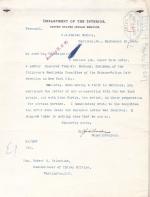
Moses Friedman forwards a letter to Robert G. Valentine from Samuel Parsons, the chair of the Children's Festivals Committee of the Hudson-Fulton Celebration in New York City. Following up on a previous conversation, Parsons regrets that they do not have the funds to work with Angel De Cora Dietz and Lonestar Dietz for the festival.
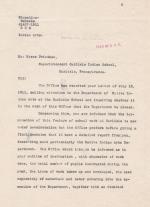
Noting heavy criticism from H. B. Peairs and Charles F. Pierce, Superintendent Moses Friedman asks Commissioner of Indian Affairs R. G. Valentine if he wants Carlisle to continue its Native Indian Arts department, which was started February 1, 1906.
Before making a decision, Valentine asks Friedman for a detailed report on the department…
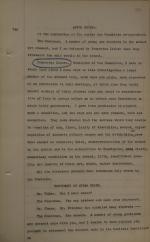
The typed transcript of Hiram Chase's testimony before the Joint Commission to Investigate Indian Affairs. At the time Chase was a student at Carlisle.
In his testimony Chase critiques Superintendent Friedman's arbitrary expulsion of students. He also answers questions regarding student acts of insubordination and alcohol consumption at…
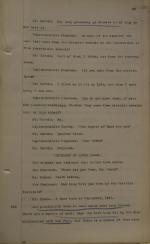
A typed transcript of Louis Brown's testimony before the Joint Commission to Investigate Indian Affairs. At the time Brown was a student at Carlisle.
Brown discusses the use of force by the disciplinarians of the school and the biased way punishment is given. He claims that students receive punishments disproportionate to the offence they…
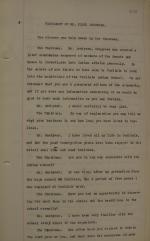
The typed transcript of Fisk Goodyear's testimony before the Joint Commission to Investigate Indian Affairs. (His name is spelled Fiske Goodyear in this transcript.) At the time Goodyear was working at a local coal and lime business, but had previously worked at Carlisle as storekeeper and clerk in the 1890's.
In his testimony Goodyear…
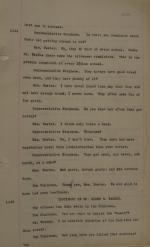
The typed transcript of Glenn S. Warner's testimony before the Joint Committee to Investigate Indian Affairs. At the time Warner was working as the athletic director at the school.
In his testimony Warner answers questions about the formation and financial dealings of the Carlisle Athletic Association. He also discusses an incident of…
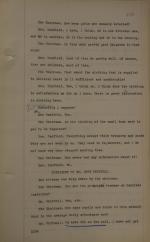
The typed transcript of John Whitwell's testimony before the Joint Commission to Investigate Indian Affairs. At the time Whitwell was the principal teacher at Carlisle.
In his testimony Whitwell begins by summarizing his duties as principal teacher then discusses negative influences on the academic program and narrates the difficulties in…

The typed transcript of Moses Friedman's testimony before the Joint Commission to Investigate Indian Affairs. At the time Friedman served as the Superintendent for the school.
In his testimony Friedman argues that incompetent or antagonistic employees are the root cause of the poor conditions at the school. He answers questions about his…
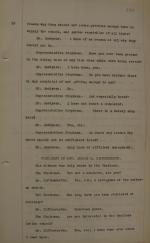
The typed transcript of Rev. George Diffenderfer's testimony before the Joint Commission to Investigate Indian Affairs. At the time Diffenderfer contracted with Carlisle to preach sermons on a semi-regular basis. He had previously served as the school chaplain.
In his testimony Diffenderfer begins by clarifying his different connections…
